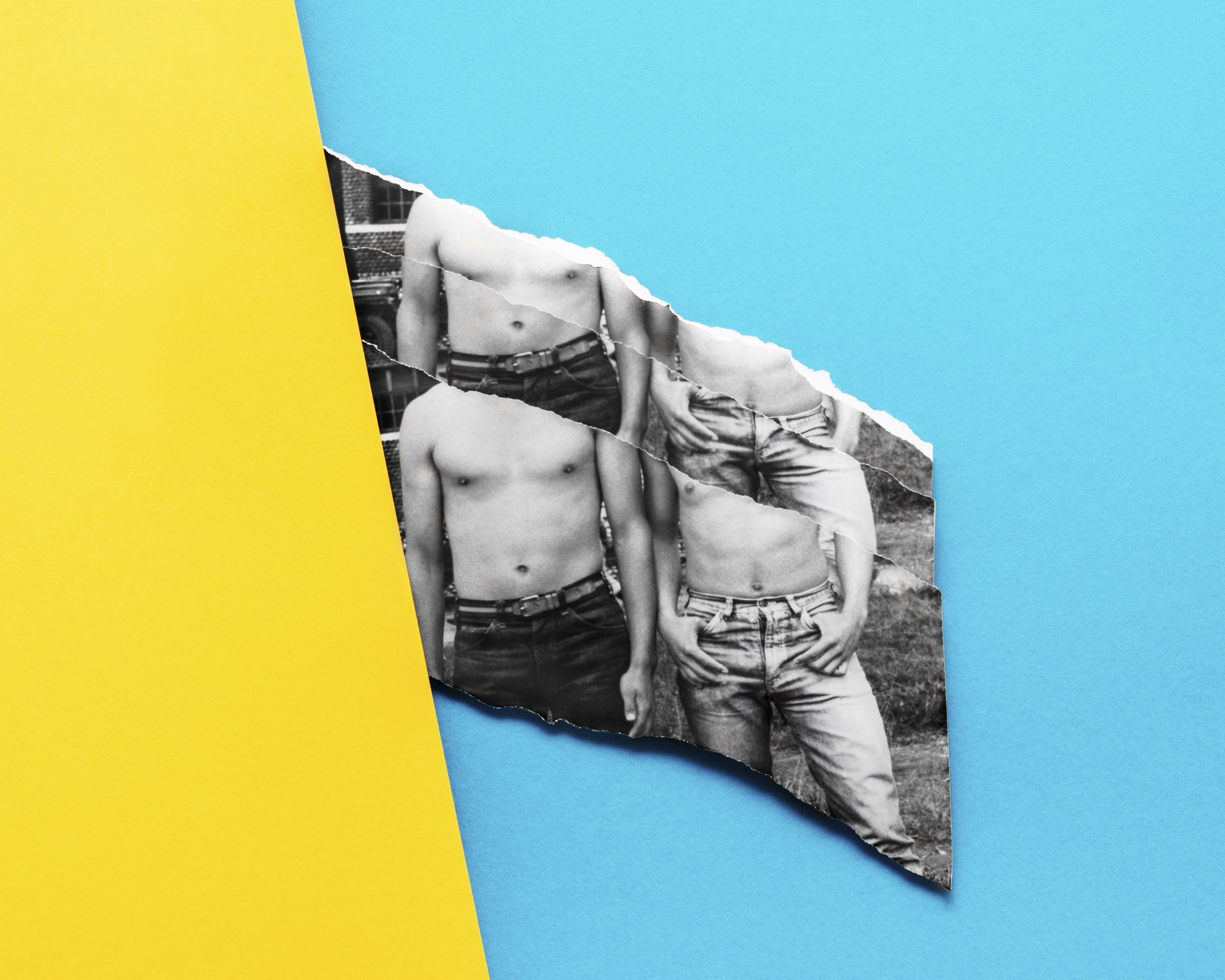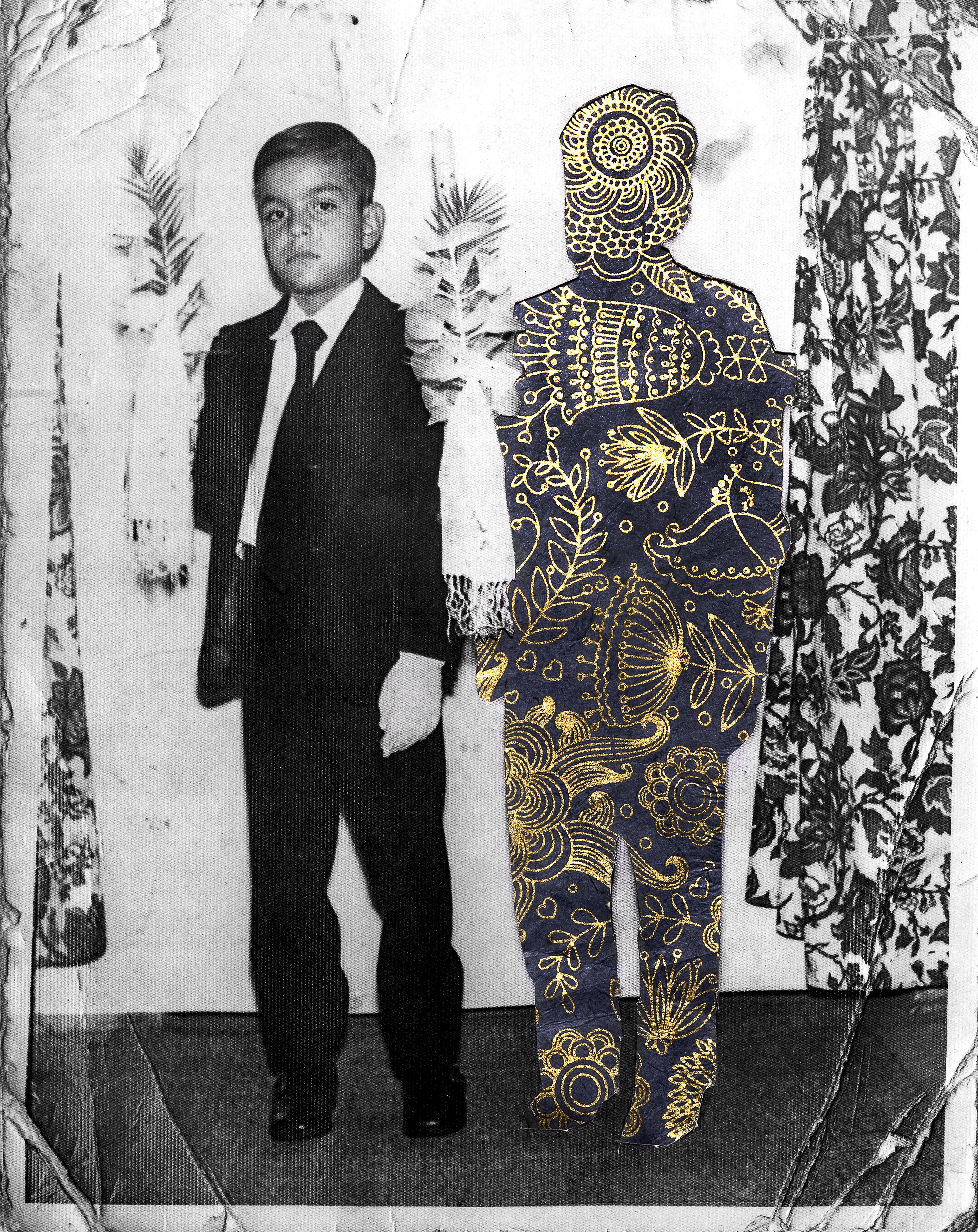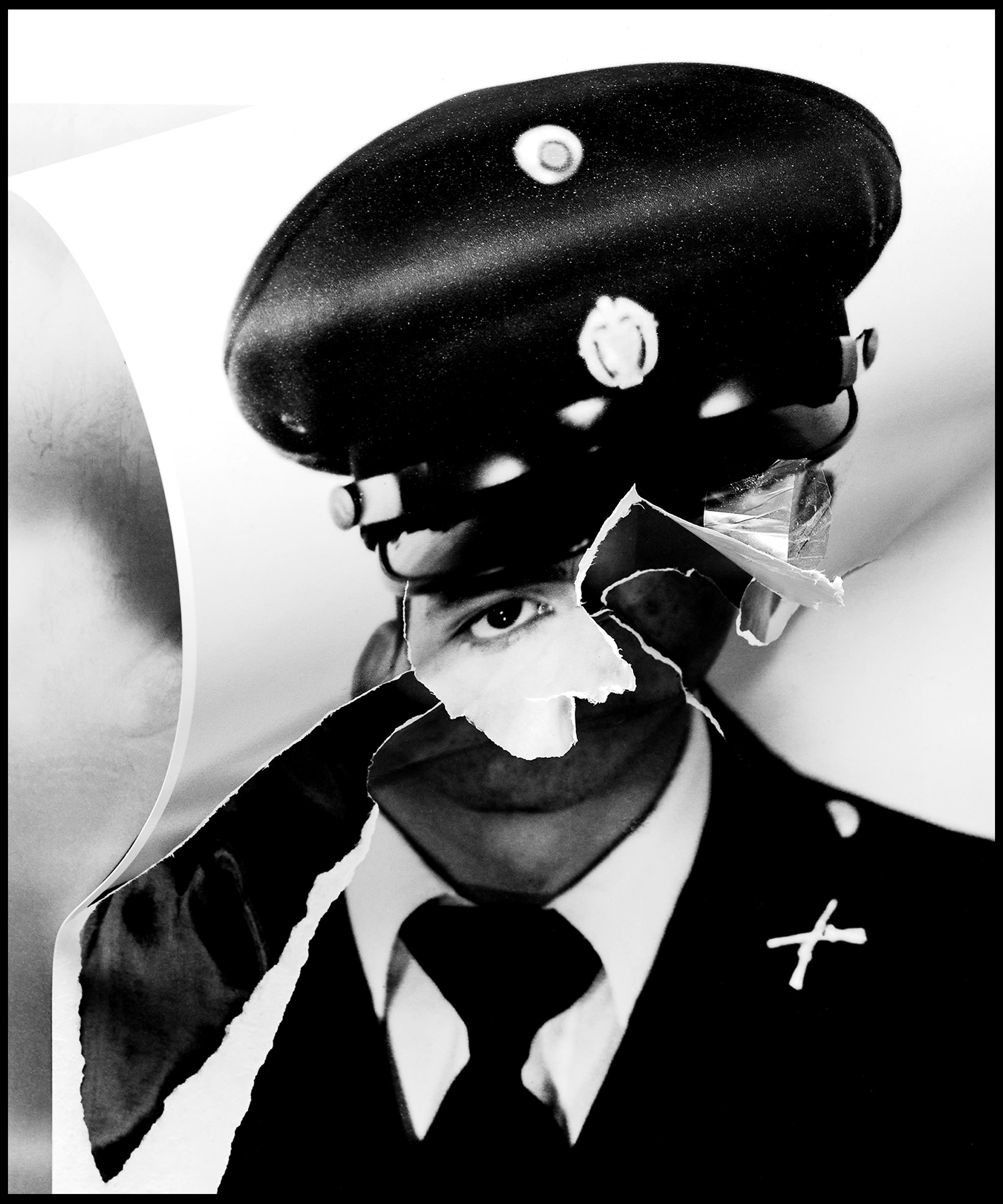
Antonio Pulgarin,
A Chest That Bears Honor
, 2017, photography, photographic collage and mixed media.
Family photographs are powerful artifacts, connecting the viewer to a personal past and evoking nostalgia, love and memories. Photographer Antonio Pulgarin (BFA 2013 Photography) has spent more than three years digging into his own family’s keepsakes to create a body of work that taps into these qualities. Titled "Fragments of the Masculine," the ongoing series explores his Colombian heritage, the conflict between stereotypical ideas of masculinity and Pulgarin's queer identity, and the lives of his late uncle and his estranged biological father.
Pulgarin's uncle, who was his mother's older brother, served in the Colombian military before dying in a car accident in 1987. Two years later, Pulgarin was born and given his uncle's name as a way to honor his memory. Pulgarin's mother, who lives in New Jersey, and other relatives, many of whom still live in Bogotá, have held onto countless photographs of the elder Antonio. Interested in learning more about the man, Pulgarin began building an informal archive from these collections. Portraits of his uncle, he discovered, had an uncanny effect on him. Often, he would recognize glimmers of himself—whether through physical resemblance or a familiar gesture—but overall the images remained foreign and distant, particularly in how they "exuded a hyper-masculine energy," he says.

Antonio Pulgarin,
Communion 1972
, 2017, photography, photographic collage and mixed media.
Through his research, Pulgarin also came across old photos of and writings by his biological father, who is also Colombian, and a distant figure in his life. "The only time I ever met him, and I didn't know this as a child, was when he was in prison in New Jersey," he says. "The Polaroid of him picking me up is the only memory I have." Many of these photographs exude machismo, "from his body language to the oiled-up muscles and tank tops." But his father's handwritten notes on them, addressed to Pulgarin, reveal a more vulnerable and open side.
Inspired by his discoveries, Pulgarin decided to use his family's photographs as the basis for his own art. He reproduced select photos of his uncle and his father and altered them—ripping, deconstructing, adding or removing information. He then embellished the images with patterns, colors and texts that speak to each man's relationship to Pulgarin and their shared Colombian heritage. For example, he says, "The flower patterns that I use remind me of these patterns that I grew up with, like the table mats that my mom would have at home." These motifs also serve to counter and "soften" the portraits' masculine energy.
His instincts and emotions often guide the development of the work. Pulgarin is judicious in how he manipulates his late uncle's image, as a way to show respect for the man and his legacy. He is less protective when it comes photographs of his father, eradicating his eyes and even his face in numerous works. "I wanted to tell my uncle's story through my eyes. With my father it wasn't so much about his story, but more my story and his absence from it."

Antonio Pulgarin,
He Was Only 25...
, 2017, photography, photographic collage and mixed media.
Beyond Pulgarin's personal feelings for his two relatives, he says their divergent paths are emblematic of a machismo culture that can be found within the Latinx community. "They represent where this ideology can lead you. If you uphold it with the honor and respect associated with the military, you can be celebrated. However, it can also lead you toward a different path. I've seen so many friends who I grew up with either arrested, shot or killed because they had to live up to a certain idea of what a man's supposed to be."
Growing up, Pulgarin understood that identifying as gay contradicted what it meant to be a "masculine Latin man." By altering the images of two such stereotypically masculine figures, Pulgarin is challenging these conventions in the hopes of starting a wider conversation. "We have to start unpacking, dissecting these ideas and really talking about them or else we are never going to evolve and move forward as a community.""Being an artist can be a narcissistic thing, like I am doing this for me first," he says. "I have the need to resolve something within myself. But at the end of the process one hopes that the work will speak to others, and it's been amazing to see that it does speak to the community at large."

Antonio Pulgarin,
Papasito
, 2017, photography, photographic collage and mixed media.
Pulgarin's work has received several awards and honors, including being selected for the 2019 Bronx Museum of the Arts' AIM (Artist in the Marketplace) program. It has been shown in numerous exhibitions domestically and is part of the permanent collection of the Fort Wayne Museum of Art, Fort Wayne, Indiana. He currently has work showing in "Queer As I," an exhibition curated by Dan Halm (MFA 2001 Illustration as Visual Essay; BFA 1994 Illustration) and on view at the Here Arts Center, 145 Sixth Avenue, through June 30. For more information, visit antoniopulgarin.com.
A version of this article appears in the spring 2019 Visual Arts Journal.

